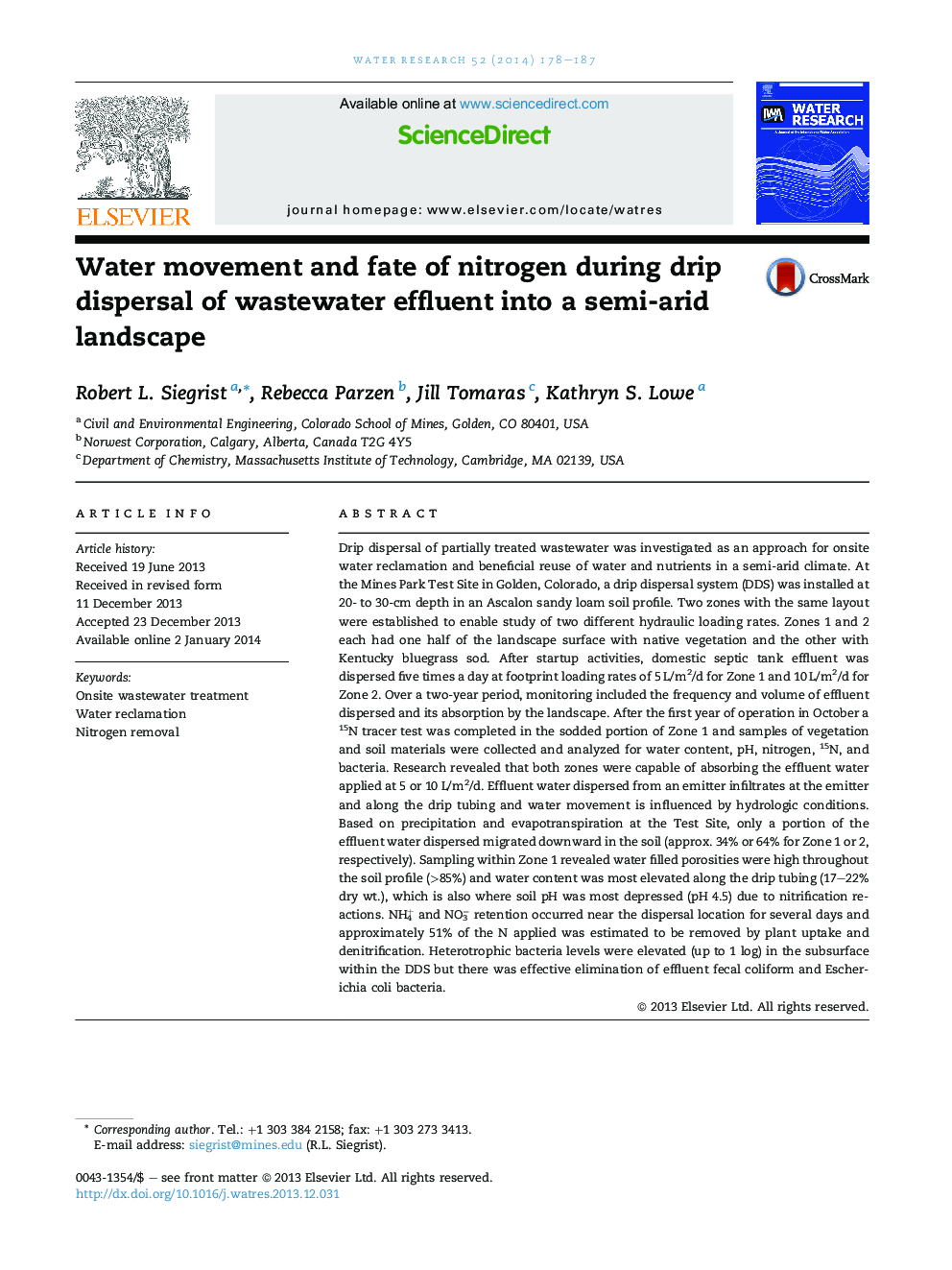| کد مقاله | کد نشریه | سال انتشار | مقاله انگلیسی | نسخه تمام متن |
|---|---|---|---|---|
| 4481673 | 1623116 | 2014 | 10 صفحه PDF | دانلود رایگان |
• During a two-year field experiment drip dispersal of effluent was studied in a semi-arid landscape.
• A 15N tracer test and 3-D dissection event revealed effluent flow and transport behavior.
• Due to site hydrology only 34 to 64% of the effluent water dispersed migrated downward to groundwater.
• An estimated 51% of the effluent nitrogen was removed by plant uptake and denitrification.
• Drip dispersal effectively treated effluent fecal coliform and E. coli bacteria.
Drip dispersal of partially treated wastewater was investigated as an approach for onsite water reclamation and beneficial reuse of water and nutrients in a semi-arid climate. At the Mines Park Test Site in Golden, Colorado, a drip dispersal system (DDS) was installed at 20- to 30-cm depth in an Ascalon sandy loam soil profile. Two zones with the same layout were established to enable study of two different hydraulic loading rates. Zones 1 and 2 each had one half of the landscape surface with native vegetation and the other with Kentucky bluegrass sod. After startup activities, domestic septic tank effluent was dispersed five times a day at footprint loading rates of 5 L/m2/d for Zone 1 and 10 L/m2/d for Zone 2. Over a two-year period, monitoring included the frequency and volume of effluent dispersed and its absorption by the landscape. After the first year of operation in October a 15N tracer test was completed in the sodded portion of Zone 1 and samples of vegetation and soil materials were collected and analyzed for water content, pH, nitrogen, 15N, and bacteria. Research revealed that both zones were capable of absorbing the effluent water applied at 5 or 10 L/m2/d. Effluent water dispersed from an emitter infiltrates at the emitter and along the drip tubing and water movement is influenced by hydrologic conditions. Based on precipitation and evapotranspiration at the Test Site, only a portion of the effluent water dispersed migrated downward in the soil (approx. 34% or 64% for Zone 1 or 2, respectively). Sampling within Zone 1 revealed water filled porosities were high throughout the soil profile (>85%) and water content was most elevated along the drip tubing (17–22% dry wt.), which is also where soil pH was most depressed (pH 4.5) due to nitrification reactions. NH4+ and NO3− retention occurred near the dispersal location for several days and approximately 51% of the N applied was estimated to be removed by plant uptake and denitrification. Heterotrophic bacteria levels were elevated (up to 1 log) in the subsurface within the DDS but there was effective elimination of effluent fecal coliform and Escherichia coli bacteria.
Figure optionsDownload high-quality image (397 K)Download as PowerPoint slide
Journal: Water Research - Volume 52, 1 April 2014, Pages 178–187
